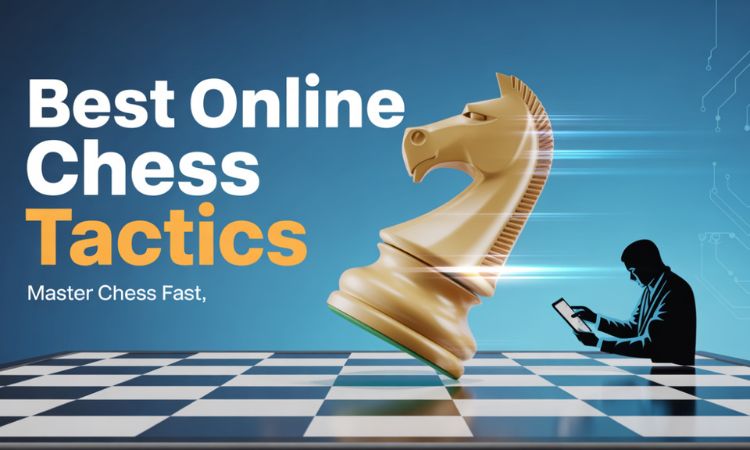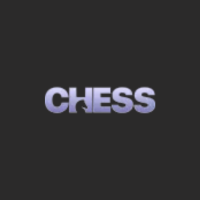Best Online Chess Tactics for Fast Improvement

Strong 8k brings an ultra-HD IPTV experience to your living room and your pocket.
When you play chess online, the entire world of tactical training opens up at your fingertips. Online play offers unparalleled access and convenience – no need to schedule a club meeting or travel to a chess tournament. In just a few clicks, you can connect with opponents of all strengths from around the globe. Even better, most major sites provide built-in learning tools: interactive analysis boards, puzzles, and tutorials to sharpen your tactics. For example, a typical online game has a “review” feature where you can replay moves, explore variations, and catch missed forks or pins. In short, playing chess online lets you practice faster and smarter – you’ll often see your rating update immediately after each game, a clear sign of your improvement.
- Anytime, Anywhere Practice: Jump into games at home, on your phone, or on the go. Most platforms (like ChessWorld or Lichess) are mobile-friendly, and you can play anonymously or create a free account in seconds.
- Built-In Training: Enjoy puzzles, lessons, and analysis right on the site. New tools help you visualize tactics and learn from each mistake.
- Track Your Progress: Online rating systems instantly show how your tactics improve. Over time, you’ll climb the leaderboards as your pattern recognition gets better.
- Learn from Others: Many sites have chat rooms, forums, and clubs. You can discuss tricky tactical positions and even watch live games or streams to pick up ideas.
Playing online is both fun and educational. With every game and puzzle, you’ll reinforce key motifs faster than playing casual face-to-face matches. Now let’s dive into the specific tactics to focus on at each level, and how to practice them when you play chess online.
Essential Tactics for Beginners
Fundamental tactical motifs are like chess superpowers for new players. Start by mastering these basics through puzzles and casual games:
- Fork: One piece attacks two (or more) targets at once. A knight fork, for example, might hit an opponent’s king and queen simultaneously. Whenever you play, look for chances to fork with a knight or pawn.
- Pin: A pinned piece can’t move without exposing a more valuable piece (often the king) behind it. For instance, if you place a bishop so that an enemy knight is between the bishop and the king, that knight is pinned. The opponent can’t move it safely.
- Skewer: Like a pin in reverse. You attack a more valuable piece (e.g. the king), forcing it to move and leave a weaker piece behind. For example, lining up a rook against an opponent’s king and queen forces the king to flee and abandons the queen (the classic bishop skewer).
Start your online practice by solving themed puzzles for these patterns. On Chess.game or other sites, set up positions or use puzzle trainers that highlight forks, pins, and skewers. Even in your first games, pay attention when your pieces (or the opponent’s) align on diagonals, ranks or files – these are opportunities for forks and pins.
Chess.game’s own tips emphasize solid opening play for beginners: “Avoid making unnecessary pawn moves” and “develop your pieces before attacking”. In other words, don’t shuffle pawns randomly. Instead, put knights and bishops on active squares so they’re ready to unleash tactics. This sound advice applies whether you’re playing online or offline – on Chess.game you can practice these ideas by playing relaxed games against the computer or friends.
Intermediate Tactics to Master
As you gain experience, build on the basics with more complex combinations. Intermediate players should look for multi-move tactics and tactical themes such as:
- Discovered Attack: Moving one piece “discovers” an attack by another. For example, if you slide a pawn forward to uncover a rook’s line toward the enemy queen, that’s a discovered attack. Discovered checks are especially powerful: uncover a check on the king while hitting another piece at the same time.
- Double Attack: Any move that hits two of the opponent’s pieces at once (beyond knights). For example, a rook move that checks the king and attacks a loose rook is a double attack. These often arise together with pins and forks.
- Removing the Guard: Sometimes a square or piece is defended, so you force or capture that defender first. Chess texts call this “removing the guard”. On Chess.game’s blog (see “Pro Tips for Advanced Players”), you’ll find examples: e.g. capture an opponent’s knight that protects a bishop, so you can then take the bishop.
- Back-Rank Tactics: When your opponent’s king is trapped behind its pawns, look for rook or queen moves to deliver mate or win material on the back rank.
To practice these, try setting up positions after each online game and using the analysis board to find missed discovered attacks or double threats. Many chess sites generate puzzles from your own games – solving those shows patterns you personally tend to overlook. Also, playing rapid or blitz games online forces you to spot these tactics under time pressure, which speeds up your calculation skill. Just remember: always double-check your moves (a quick legend on tactics warns “always look for checks!”).
Advanced Tactics to Hone
For advanced players, tactical combinations can involve deep calculation, sacrifices, and known mating nets. Familiarize yourself with classic tactical motifs like the Greek Gift sacrifice (a bishop sac on h7/h2), the Lasker–Loyd Mate, or complex mating patterns. Study master games online: most chess sites let you replay grandmaster games move-by-move and even flip on engine lines to see hidden tactics.
Chess.game’s strategy guides cover high-level concepts as well. For example, their “Top Chess Strategies” section explains openings like the Sicilian Defense (which often leads to tactical chaos) and the Queen’s Gambit. These articles indirectly train tactics by showing typical ideas and pawn structures for both sides. Advanced players should also practice solving very hard puzzles (2000+ rating puzzles or multi-move puzzles available online) and perhaps play (or analyze) correspondence games where you have days to calculate tactics carefully. Remember: even grandmasters rely on pattern recognition, so the more tactics you review (via books, puzzles, or online coach modules), the sharper you become.
Practice and Platforms for Tactics Training
The beauty of playing chess online is the abundance of training resources. To maximize your improvement:
- Daily Puzzle Drills: Most chess sites (Chess.com, Lichess, Chess.game, etc.) offer a “Puzzle of the Day” or tactics trainer. Spend a few minutes each day solving forks, pins, and combinations. This builds instinctive recognition.
- Review Your Games: After each online game, use the analysis board to find missed tactics. Online engines will often flag blunders and suggest tactical continuations. Learning from your own mistakes (and opponent’s resources) accelerates growth.
- Vary Your Opponents: Practice against players of different strengths. Chess.game even suggests that beginners try games versus bots or fellow novices to “train your skills”. Conversely, testing yourself occasionally against stronger players exposes you to new tactical themes.
- Use Learning Content: Explore built-in lessons or blog posts. Chess.game provides helpful articles – for beginners about piece development (avoid random pawn pushes) and for everyone about useful opening ideas. Other sites similarly have video lessons on tactics.
- Stay Mobile: When you have a spare minute, fire up an online chess app. Since major platforms are mobile-friendly, you can solve a puzzle or play a quick game anywhere. Consistency is key: frequent short sessions help tactics sink in.
Each of these practices keeps you engaged in real games – the best teacher of tactics. As you play chess online regularly, the patterns will start to “jump out” at you faster. Chess platforms also save your stats and games, so you can literally see your improvement over weeks and months.
Conclusion: Time to Play Chess and Improve
Whether you’re just starting out or already a seasoned player, honing your tactics is the quickest way to wins. By playing chess online consistently and focusing on the patterns above, you’ll see your skills skyrocket. Platforms like Chess.game make this easy: no signup is needed to start a game, and you’ll find puzzles, strategy guides, and practice modes right away. Ready to put it all into action? Jump online, play chess, and apply these tactics in your next games. The board is waiting – go to Chess.game now and discover your new tactical edge!
Note: IndiBlogHub features both user-submitted and editorial content. We do not verify third-party contributions. Read our Disclaimer and Privacy Policyfor details.


